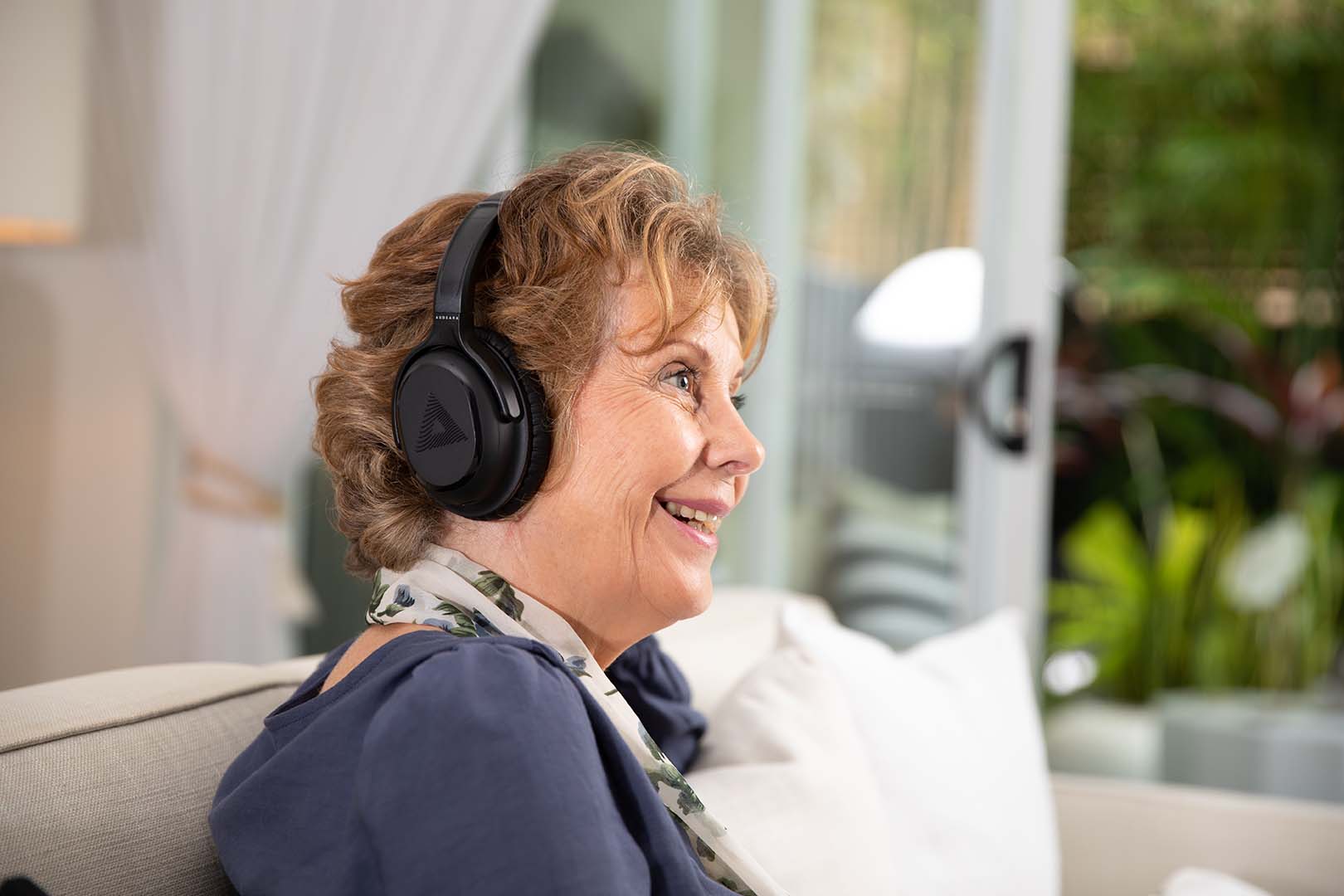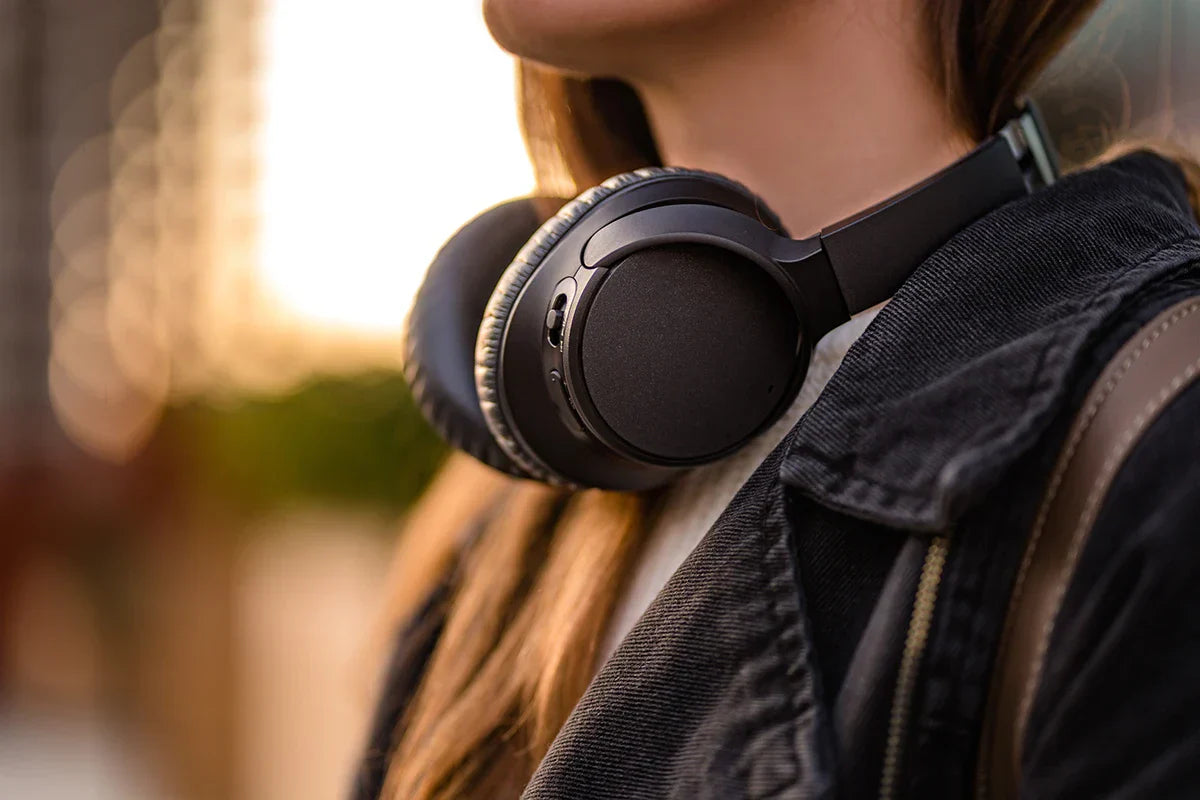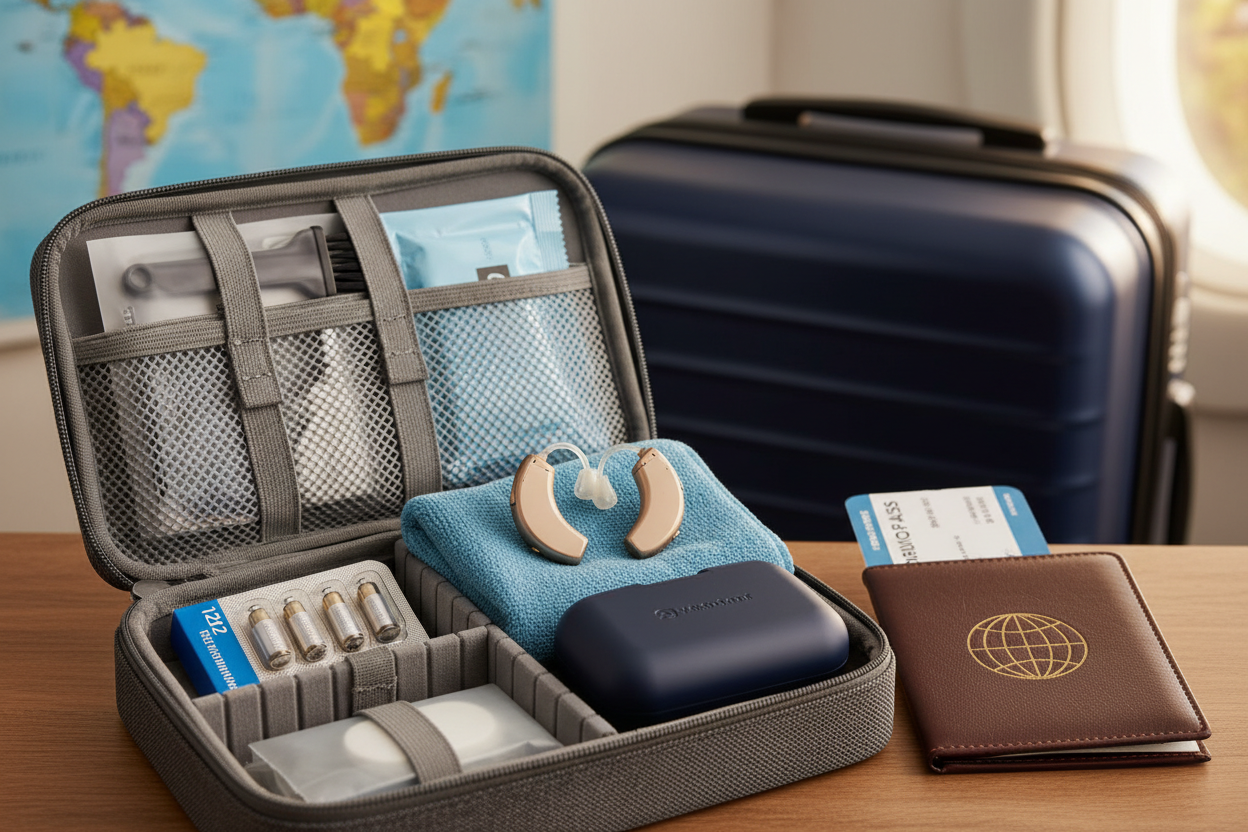Music, podcasts, Zoom calls, gaming—you name it, most of us use headphones or earbuds daily. But what if you wear hearing aids? Is it safe to combine them, or does it damage your hearing or devices?
The short answer: Yes, it can be safe to use headphones with hearing aids, but it depends on the type of hearing aid, type of headphones, and how you use them.
This Q&A guide covers everything you need to know—from compatibility and risks to pro tips and best practices.
Q1: Can I wear headphones over hearing aids?
Yes, but it depends on the style of your hearing aids and the type of headphones you choose.
-
Behind-the-Ear (BTE) and Receiver-in-Canal (RIC): Best paired with over-ear headphones (the kind with large cushions that cover your entire ear). These fit around your hearing aids instead of pressing on them.
-
In-the-Ear (ITE): Work with both on-ear and over-ear headphones, though comfort varies.
-
Completely-in-Canal (CIC) or Invisible-in-Canal (IIC): Compatible with almost any type of headphone or earbud since they sit deep inside the ear canal.
Avoid: Small, tight on-ear headphones—they press directly on BTE devices and may cause feedback or discomfort.
Q2: Can I use earbuds while wearing hearing aids?
Generally, no—at least not traditional in-ear earbuds.
-
If you wear CIC or IIC aids, you may be able to place earbuds over them, but fit is tricky.
-
If you wear BTE or RIC aids, earbuds won’t fit properly because your ear canal is already occupied by domes or molds.
Alternative: Many modern hearing aids already stream audio wirelessly via Bluetooth, eliminating the need for earbuds altogether.
Q3: Is it safe for my hearing to double up—hearing aids + headphones?
Yes, but use caution.
-
Hearing aids amplify sound, and headphones produce sound. If you combine them at high volume, you could over-amplify audio and risk hearing damage.
-
Safe practice: Keep headphone volume below 60% and monitor for any discomfort or ringing afterward.
-
Think of headphones as one sound source—your aids amplify appropriately if programmed well.
Pro tip: If your hearing aids have a “music” program, switch to it for balanced sound quality.
Q4: Can headphones damage my hearing aids?
Not if used properly.
-
Pressure: Tight headphones pressing against BTE aids may cause friction or microphone blockage.
-
Moisture: Sweat or trapped heat under headphone cushions could affect devices. Use drying kits after long listening sessions.
-
Feedback: If headphones fit poorly, you may hear whistling from your aids. Adjust placement to fix this.
But in general, headphones don’t damage hearing aids electronically.
Q5: What’s the best type of headphones for hearing aid users?
Here’s a quick breakdown:
-
Over-ear headphones: Best choice for most BTE/RIC users. Provide comfort, good sound quality, and no interference.
-
Bone-conduction headphones: Great alternative. They sit on your cheekbones and transmit sound through vibrations—leaving ears open for hearing aids.
-
On-ear headphones: Work only for ITE aids, but may cause pressure with BTEs.
-
Earbuds: Work mainly for CIC/IIC aids, but generally not recommended for others.
Brands like Bose, Sennheiser, and Sony offer models with comfortable cushions and high-quality sound that work well with aids.
Q6: Do hearing aids with Bluetooth replace headphones entirely?
For many users, yes.
-
Modern aids (Oticon, Phonak, ReSound, Widex, Starkey, etc.) can stream music, calls, and videos directly from your phone or computer.
-
This gives you personalized sound tailored to your hearing loss.
-
Downsides:
-
Bluetooth drains batteries faster.
-
Not all devices stream in stereo (depends on model).
-
Latency may occur during gaming or video calls.
-
Still, most people find Bluetooth streaming better than juggling earbuds.
Q7: Can I game or watch movies with headphones and hearing aids?
Absolutely—just optimize your setup:
-
Over-ear headphones for immersive sound with BTE/RIC aids.
-
Direct Bluetooth streaming if your aids support low-latency connections.
-
External streamers (like Phonak TV Connector or ReSound Multi Mic) plug into consoles/TVs and transmit sound directly to your aids.
Pro tip: Ask your audiologist to create a special “media” program for balanced sound while gaming or streaming.
Q8: Are there risks of feedback (whistling) when using headphones?
Yes, especially with BTE aids. Feedback occurs when amplified sound from your hearing aid leaks out and re-enters the microphone.
How to reduce it:
-
Use over-ear headphones with full cushions—they seal sound in.
-
Lower headphone volume slightly.
-
Adjust aid positioning.
If feedback persists, ask your audiologist to fine-tune your feedback suppression settings.
Q9: What about noise-canceling headphones—are they safe with hearing aids?
Yes—and they can be incredibly helpful.
-
Noise-canceling headphones reduce ambient sound, so your hearing aids don’t have to work as hard.
-
Great for airplanes, offices, or commuting.
-
Some users wear noise-canceling headphones over their hearing aids purely to create a quieter environment, then let their aids amplify speech naturally.
Pro tip: Combine with your aid’s “speech focus” mode for even clearer conversations in noisy places.
Q10: How do cochlear implant users handle headphones?
Many of the same rules apply:
-
Over-ear headphones usually work best.
-
Some implants connect via direct audio cables or wireless streamers.
-
Feedback is less of an issue, but comfort and placement matter.
If you have both hearing aids and cochlear implants (bimodal use), your audiologist can sync streaming devices to deliver sound to both ears simultaneously.
Q11: Should I buy “hearing aid compatible” headphones?
Yes, if available. While most standard headphones work fine, some companies now market HAC (Hearing Aid Compatible) models that:
-
Offer larger ear cups for BTE comfort.
-
Use lower electromagnetic interference.
-
Have adjustable sound profiles tailored for hearing loss.
Check with your audiologist or hearing aid manufacturer for recommended brands.
Q12: What if headphones are uncomfortable with my hearing aids?
You’re not alone—this is a common issue. Try:
-
Switching to CIC/IIC aids if you’re due for a new pair.
-
Using bone-conduction headphones.
-
Streaming audio directly through Bluetooth-enabled aids.
-
Choosing looser-fitting over-ear headphones with soft cushions.
Q13: What’s the safest way to listen to music with hearing aids?
-
Use Bluetooth streaming if available.
-
If not, pick over-ear headphones instead of earbuds.
-
Keep volume below 60%.
-
Limit sessions to 60 minutes at a time (the 60/60 rule).
-
Always clean and dry aids after long use.
Final Tips: Headphones + Hearing Aids Can Work Together
- Safe: Using headphones with hearing aids is generally safe.
- Comfort is key: Over-ear headphones are your best friend if you wear BTE or RIC devices.
- Bluetooth is better: Direct streaming through modern aids often beats juggling headphones.
- Check with your audiologist: They can customize programs for music, calls, or gaming.






Compartir:
Do Hearing Aids Work with Face Masks and Glasses?
Do Hearing Aids Affect My Sleep Quality?